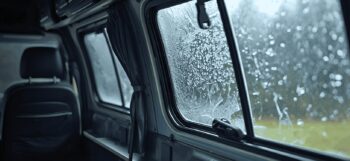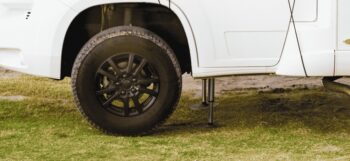Driving a right-hand drive abroad can be daunting when you’re not used to it.
Suddenly, it seems everything you do automatically goes out of the window, and extra due care and attention is needed to make even the simplest of manoeuvres. Couple this with the fact that you’re unaccustomed to the country’s road culture, driving on the opposite side of the road can be a nerve-wracking experience, when you try it for the first time.
While driving a right-hand drive abroad may feel more ‘natural’ than hiring a left-hand drive, it can bring with it its own set of problems, such as extended blind spots and head lamps that dazzle other road users.
In this article we aim to offer guidance and considerations when driving a right-hand drive abroad to help take the fear element out of being on the road.

Types of roads you’ll encounter in Europe
Autoroutes, Autobahns, Autopistas and Autostrades are essentially motorways. Motorway road signs are recognisable by white text on a blue background or white text on a green background. Speed limits on European motorways are either 120km/ph or 130km/ph under normal conditions, but these will reduce in wet weather or if visibility is reduced.
Primary roads connect motorways to major towns and cities. On these roads the speed limit is typically between 80 - 90 km/ph, and in most places the signs are white on green or white on blue.
Secondary roads are smaller connecting roads and are also found within towns and cities. They are signposted with black text on a white background, and there is normally a speed limit of 50 km/h.
How to drive in Europe
Driving on the right requires mental adjustment, but it's easy enough once you get the hang of it.
Here are the most important things to remember:
- Always stick to the right – Stick a label on your dashboard to remind yourself, if you feel it will help
- You need to traverse roundabouts in an anti-clockwise direction and give way to the left
- Oncoming traffic will be seen on the left
- Left-turning traffic will cross oncoming traffic
- On a motorway or dual carriageway, the far right-hand lane is the slow lane; the inner left-hand lane is the fast lane - Be aware of blind spots when overtaking
- Traffic signs will be on the right-hand side of the road
- You will need headlamp beam adjusters to avoid dazzling oncoming traffic at night
- Toll booths will be on the left
- In France, speed limits are changeable, depending on the weather

Overtaking on European roads will be more difficult if you’re driving a right-hand drive, as your visibility will be reduced. If you really must overtake, do so with caution and get the person in the passenger seat to tell you when it is safe to make the manoeuvre. Overtaking on a single carriageway is not advisable and it’s generally safer to wait until you reach a stretch of dual carriageway. Remember to go back to the right-hand lane when you have overtaken other vehicles. Speed limits in Europe are generally higher than in UK so vehicles will be travelling faster, and extra care must be taken.

Forward planning
Planning your route in advance can save you from getting yourself into an awkward situation, such as getting lost, or ending up on a road you’re not supposed to be on. Research the area you’re travelling to on a map before you leave. Note places of interest on each route you take to get to your destination. It'll be harder to get lost if you can remember some key places that can keep you heading in the right direction. Knowing where you are going to park when you get to your destination can also be beneficial.
Driving around towns
Familiarise yourself with road signs, road markings and traffic lights. These could include stop signs, single continuous white lines, which indicate no overtaking or flashing amber lights.
When you approach a junction with traffic lights, remember to look at the lights on the right. This is important at complex junctions, especially where there are multiple roads merging in from close angles. Moving out of parking spaces can be a perilous manoeuvre too, even more so when reversing. As with overtaking, getting a passenger to check you are not in danger of hitting someone or something as you pull out, is advisable.
If visiting big cities, it can be less stressful to park your car on the outskirts and use public transportation or a taxi to get into the city. Many cities across Europe have taken measures to discourage urban driving, so you may be required to pay a congestion charge, or your car must meet a certain emission standard to enter the city limits.
Each country has its own driving quirks that you may not be aware of. For example, in France, if someone flashed their headlights it means, “I am coming through with priority”, NOT “please come through”, as it would in the UK. It could be a good idea to research driving in the country you’re travelling to, to get a heads-up on their driving behaviours and avoid unnecessary friction.
Abide by European driving rules
Carry important documents: Always carry your passport, drivers’ licence, V5C Logbook – or VE103 certificate, if you’re driving in a vehicle hired in the UK. You’ll need to have proof that your vehicle is insured.
Don’t drink and drive: All European countries have strict alcohol limits, so it’s never worth the risk. In many parts of Europe, the police don’t need probable cause to stop and breathalyse you. They are permitted to make random stops and checks, which means you could easily find yourself stopped unexpectedly.
Keep your lights on: In many European countries, lights are mandatory even during daylight hours.
Be aware of low-emission zones: Many major cities in Europe do not permit cars with high emissions at certain times of the day.
Pack the necessary safety equipment: Most countries expect you to carry hi-vis jackets for each passenger, a warning triangle and a first aid kit, as standard. In France, drivers are also required to carry spare bulbs. The law on carrying breathalysers was revoked in 2020, following a vote by French parliament.
Don’t use your phone: It’s against the law in almost all European countries to call or text on a mobile phone while driving.
Always wear a seatbelt: As in the UK, wearing a seatbelt is obligatory for drivers and passengers across Europe.
Make sure you’re sufficiently covered!
Driving a right-hand drive abroad can increase the chances of prangs and bumps. Getting the right cover in place will ensure you are well protected, in the event of an accident. Remember, no policy will protect you against every scenario, so it’s best to read your policy documents to understand the conditions and exclusions that apply.
If you’re planning to cross the channel and holiday in Europe, one thing you don’t want to overlook is EU breakdown insurance. Don’t assume your standard UK breakdown insurance offers the same level of cover abroad as it does at home in the UK. Failing to have European breakdown cover in place could mean your holiday ends up costing you way more than anticipated, if the worst were to happen. Breaking down while overseas could be much more complicated, than if it were to happen in the UK.
You can visit our website for further information on motorhome insurance, RAC motorhome breakdown insurance, car insurance and RAC car breakdown cover. Alternatively, you can speak to one of our customer advisors on 01480 402 460 to get a quote.
Useful links:
Get up to date travel advice from the Foreign Commonwealth Office here: https://www.gov.uk/foreign-travel-advice
Disclaimer: The sole purpose of this article is to provide guidance on the topic covered. This article is not intended to give legal advice, it should not be relied upon. It should not be regarded as a comprehensive statement of the law and/or market practice in this area. We cannot guarantee the completeness or accuracy of the information contained in the external links, which were live at the date of publication.











